In this lesson, we take a look at the whole rest which is also called a semibreve rest (British).
Rests indicate a period where no notes are to be played. A period where you take a pause. It’s what makes music come alive. It’s what creates such beautiful rhythm and melody: the combination of notes and rests.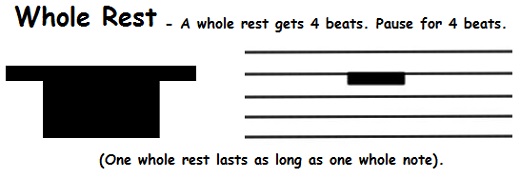
Highly Recommended: Click here for one of the BEST piano/keyboard courses I’ve seen online.
We’ve already looked at the quarter rest and half rest. A quarter rest is a period of silence in music that lasts for one beat, while a half rest lasts for two beats.
Well, a whole rest is four times the length of a quarter rest and twice the length of a half rest. It lasts for four beats in most time signatures. 4/4 time is one example. This means that for an entire measure, no note is played.
What do we mean by 4/4 time? 4/4 is a time signature. Time signatures tell you the number of beats in a measure and the type of note that gets one beat. So in a 4/4 time signature there are four quarter notes in one measure. Mathematically speaking, this also means that there can be two half notes or a whole one in a measure. Clearly, 1/4 rests and 1/2 rests are fractions of the whole.
Each rest symbol corresponds with a particular note value. The whole one corresponds with a whole note or semibreve. They both have a time duration of four beats. 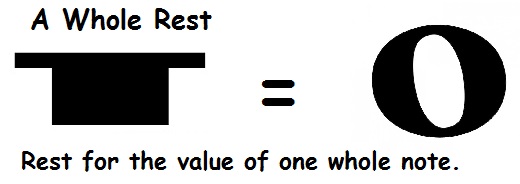
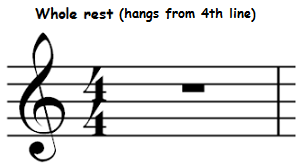 What does a whole rest look like? It hangs from the fourth line on the musical staff and its height is half the distance between lines. It is rectangular shaped and some people love to refer to it as an upside down hat. It looks like the half rest but the difference is that while it hangs under the fourth line, the half rest sits on the third (middle line) of the staff. (Lines on the staff are numbered starting from the bottom.)
What does a whole rest look like? It hangs from the fourth line on the musical staff and its height is half the distance between lines. It is rectangular shaped and some people love to refer to it as an upside down hat. It looks like the half rest but the difference is that while it hangs under the fourth line, the half rest sits on the third (middle line) of the staff. (Lines on the staff are numbered starting from the bottom.)
Counting Whole Rests & Notes
Whole notes and rests are very easy to count because of the fact that they last for four beats. Here’s an example of a whole note and rest below. Each lasts for four beats in common time. In the first example, count “1-2-3-4” and play the note, F on your piano. Hold the note for four beats. Then, in example two, count for another four beats, but this time play nothing. Pretty straightforward. 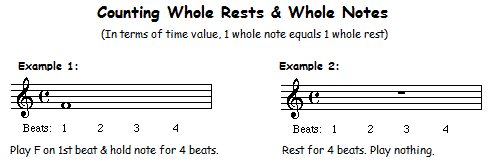
The following diagram shows different types of notes and rests and their duration. 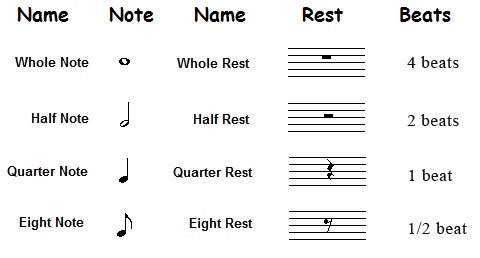
Beginner piano lesson about rests, note values and time signatures.
Go here to learn more about whole rests and piano notes.
Here’s my top recommendation for learning to play the piano.